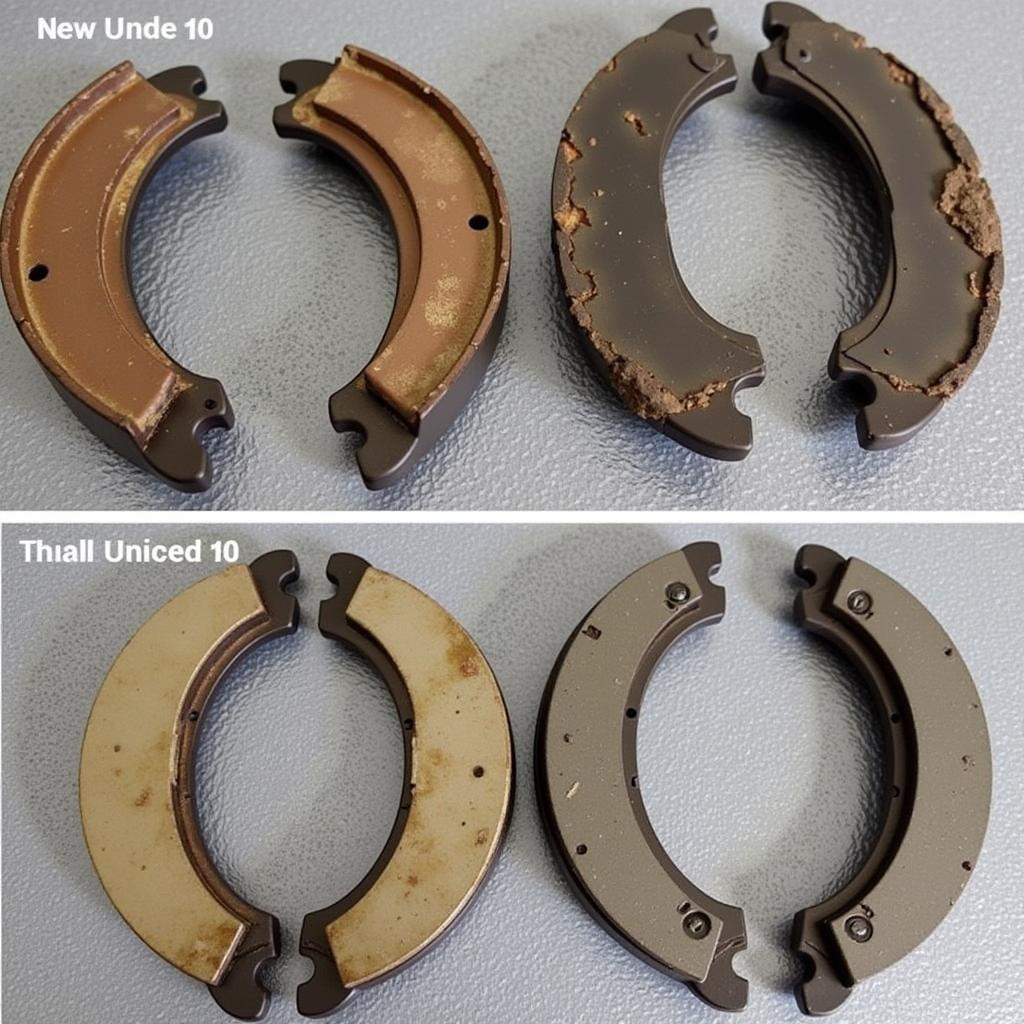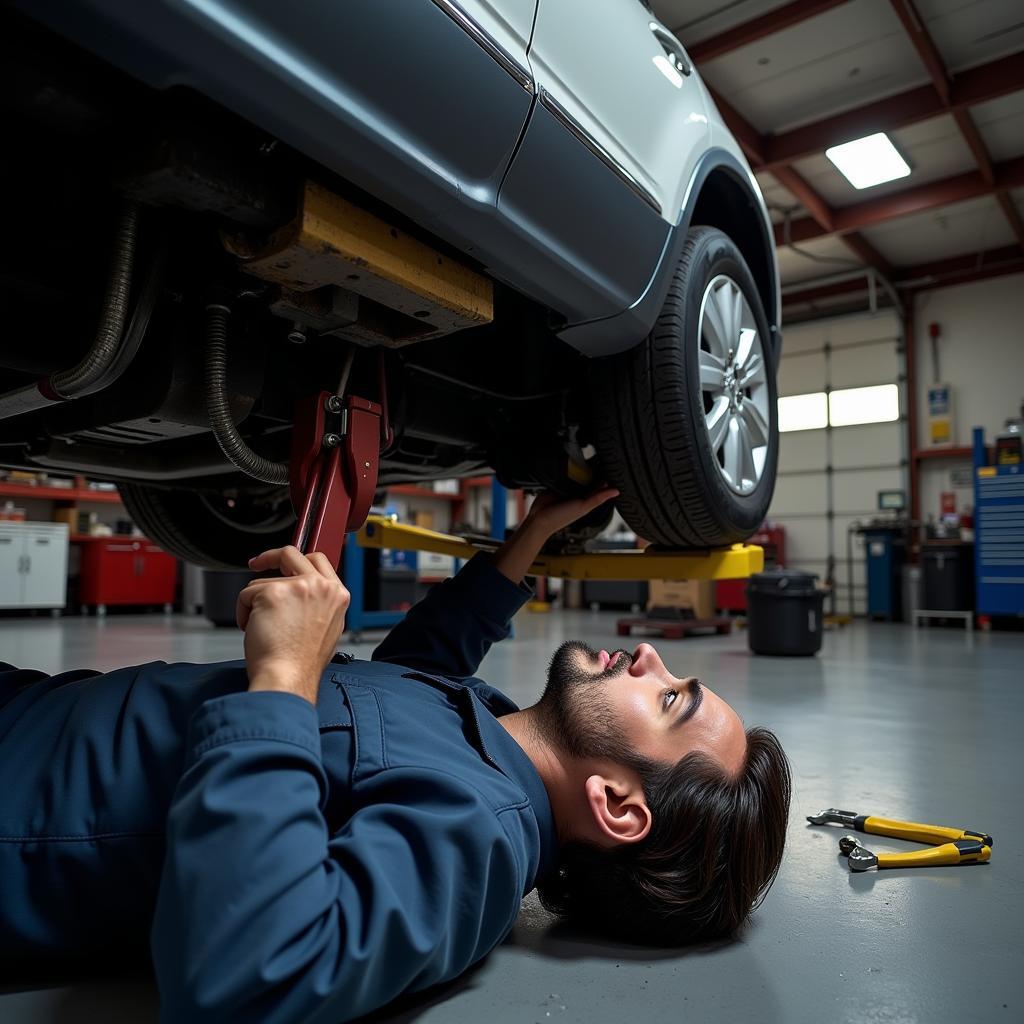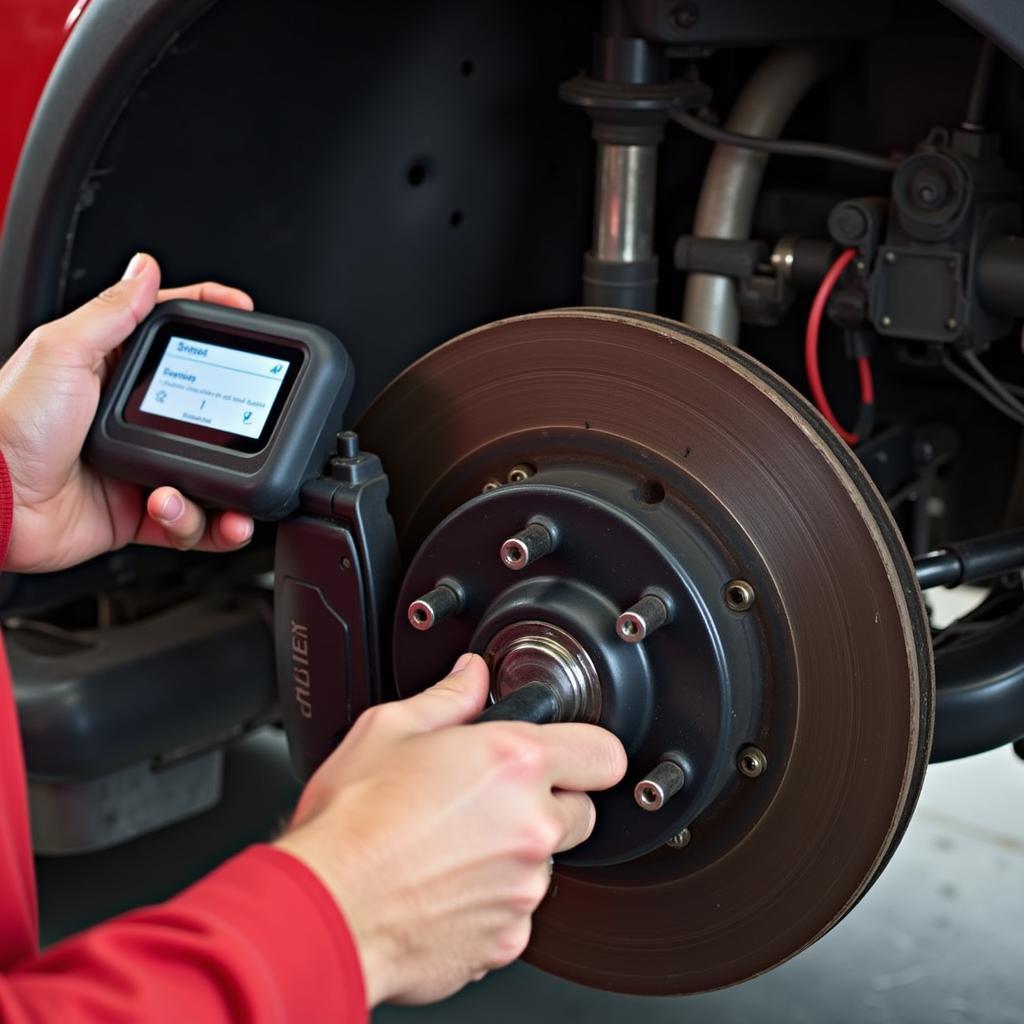The parking brake warning light on your 2011 Buick Enclave is a crucial safety feature. When illuminated, it signals a potential issue with your parking brake system. This article delves into the common causes of this warning light and provides step-by-step guidance on troubleshooting and resolving the issue.
Understanding Your Buick Enclave’s Parking Brake System
Before diving into the causes, it’s crucial to understand the basics of your vehicle’s parking brake system. The parking brake, also known as the emergency brake, is a mechanical system that locks the rear wheels to prevent the vehicle from rolling when parked or stationary. When engaged, a switch activates the warning light on your dashboard as a safety reminder.
Common Causes of a Parking Brake Warning Light
There are several reasons why your 2011 Buick Enclave’s parking brake warning light might be on:
1. Engaged Parking Brake
The most straightforward explanation is that the parking brake is partially or fully engaged. Always check this first by ensuring the parking brake lever is completely released.
2. Low Brake Fluid Level
Low brake fluid is a serious issue that can trigger the parking brake warning light. Brake fluid is the lifeblood of your braking system, and a leak can lead to reduced braking power. Check the brake fluid level in the reservoir and top it up if necessary. If the level is consistently low, it indicates a leak that needs immediate attention from a qualified mechanic.
3. Faulty Parking Brake Switch
The parking brake switch is responsible for turning the warning light on and off when the brake is engaged or disengaged. A faulty switch can get stuck in the “on” position, causing the light to illuminate even when the brake is released.
4. Worn Brake Shoes or Pads
While less common, worn brake shoes (for drum brakes) or pads (for disc brakes) can also trigger the warning light. This is because the worn components can affect the parking brake cable’s tension, leading to an inaccurate reading by the system.
 Worn Brake Shoes Buick Enclave
Worn Brake Shoes Buick Enclave
5. Electrical Issues
Electrical problems, such as a short circuit or damaged wiring in the parking brake system, can also lead to a false warning light.
Troubleshooting the Parking Brake Warning Light
Here’s a step-by-step guide to help you troubleshoot the issue:
- Check the parking brake lever: Ensure it is fully released.
- Inspect brake fluid level: Add brake fluid if low. If the problem persists, seek professional help to diagnose a potential leak.
- Visually inspect the parking brake switch: Look for any visible damage or loose connections.
- Check for Diagnostic Trouble Codes (DTCs): You can use an OBD-II scanner to read any stored codes related to the parking brake system. This can provide valuable information about the root cause.
Expert Insight from Michael Thompson, ASE Certified Master Technician: “It’s essential to remember that addressing a parking brake warning light often goes beyond just releasing the lever. Always consider the interconnectedness of your vehicle’s systems and seek professional help for accurate diagnosis and repair.”
When to Consult a Professional
While some causes of a parking brake warning light are straightforward, others require the expertise of a qualified mechanic. If you’ve exhausted basic troubleshooting steps or are uncomfortable working on your vehicle’s braking system, it’s best to consult a professional. Attempting to fix complex brake issues without proper knowledge and equipment can be dangerous and lead to further damage.
 Mechanic Inspecting Buick Enclave Undercarriage
Mechanic Inspecting Buick Enclave Undercarriage
Conclusion
Addressing a parking brake warning light in your 2011 Buick Enclave is crucial for your safety and the vehicle’s well-being. By understanding the potential causes and following the troubleshooting steps outlined in this article, you can take the right course of action. Remember, if in doubt, always consult a qualified mechanic for expert diagnosis and repair.

